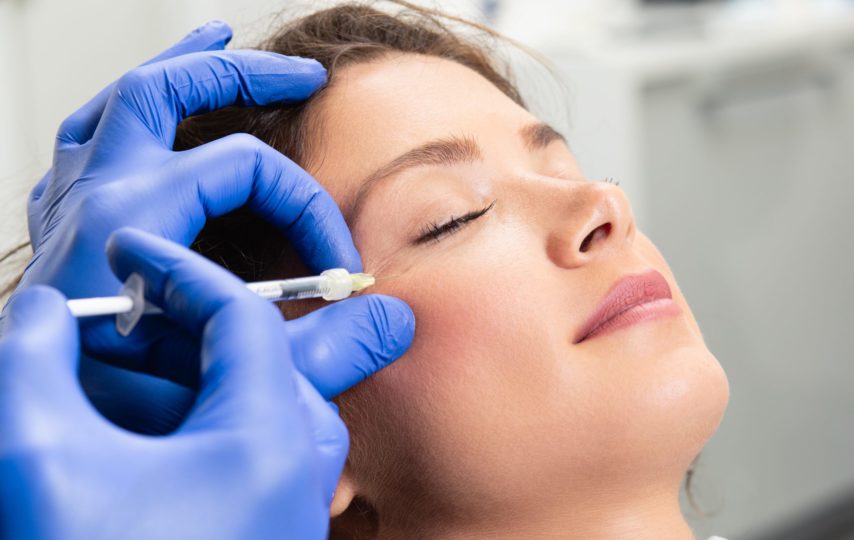Whether it is from physical violence, a car crash, or other life-threatening incidents, severe facial trauma may occur instantly. For some, the trauma may be handled immediately post the incident by receiving care at the nearest facility. Despite the efforts by the trauma specialists, you may still have disfigured face.
A facelift is a form of cosmetic surgery that provides your face with a more youthful appearance. It removes the excess skin on the lower half of your face and tightens loose skin around your jawline. Facelift surgery also removes deep creases around your nose and mouth. It has also been employed in removing fat and hanging skin on the neck and under the chin.
The procedure tightens underlying tissues, and its combination with surgery enhances eyelids, brows, cheeks, and forehead. It is often an outpatient technique and may involve either general anesthesia or sedatives and local anesthesia. The procedure may last for two to five hours, after which the surgeon may release you to go home.
What You Should Expect
Before the procedure, the surgeon will review your medical history. They will probably inquire about any allergies, current medications, blood clotting, drug addiction, skin condition, scarring, and blood pressure status. With your surgeon, you will discuss the goals and expectations from the technique based on the bone structure and type of skin.
The Surgical Procedure
A traditional facelift involves making incisions in front of your ear. There is an extension into the hairline and behind the ear into the scalp. Newer cosmetic procedures are being developed to improve efficiency. They are improvements on the traditional facelift that allow for easier and faster recovery.
Lasers have been used in neck lifting procedures where it melts the fats under your chin and tightens the skin. Endoscopy may also be used in brows and facelifts. The tiny cameras allow the surgeons to make small incisions. It implies minor trauma to the tissues and allows for fast recovery.
The surgeon can raise the forehead skin by making small incisions on your frontal hairline. After that, they will lift and secure it in the deep tissues to prevent excessive drooping or sagging. Note that liposuction has proven effective in removing fat deposits from the face, mainly between the neck and the chin. Liposuction can be a different technique or carried out as part of the facelift.
Mini-facelifts are less invasive and aim at lifting the sagging skin and wrinkles on your face, mainly on the lower part. The recovery time and scarring in mini-facelift are shorter when compared to the traditional facelift. Facelift smoothens the look and restores a youthful appearance. If you need more information, better check out scars removal fremont ca.
Complications
Cosmetic surgeries are generally safe as long as professional surgeons carry them out. Although the risks are rare, facelift surgery may be associated with an infection, hematoma, skin necrosis, scarring, hair loss at the incision site, bruising and bleeding. Others include numbness and anesthesia-related complications.
If you notice swelling, redness, pain, or inflammation after surgery, promptly inform your physician. It could be an indication of hematoma. Fever is also a sign of an infection. Although facelift surgery may help with facial trauma, it is not recommended in individuals with severe medical complications. For maximum benefit, you should be in an excellent physical and mental health state.
Facelift surgery is contraindicated in diabetic and hypertensive patients. Diabetic patients are characterized by wounds that do not heal, which may worsen the condition. Tobacco smoking also disrupts wound healing.
In case you are contemplating a facelift, it is advisable to avoid nicotine products. Although the surgery restores a youthful appearance, the patients should have realistic expectations and understand that the procedure will not disrupt the normal aging process.
A good bone structure and skin elasticity give better results. Patients are also advised to avoid blood thinners such as aspirin at least one week before surgery because of the risk of severe bleeding.
Recovery
The wound healing process is often complex irrespective of whether it is surgery or trauma-related. Completion of healing may take up to one year. You will notice several changes with the wound with time in the process of healing. Note that healing tests your persistence and patience. The follow-up and wound care aim at achieving better results.
You will experience slight discomfort, such as pain which is quickly relieved by the painkillers. Swelling and bruising may worsen two days after surgery and can persist for some days. An average of two weeks is required for recovery. However, it is advisable to resume vigorous activities four weeks after the face lifting procedure.
The surgeon will give instructions on the removal of drains. To achieve more significant results from the facelift, consider moisturizing your face every day. Avoid too much exposure to the sun and practice a healthy lifestyle in general.
Note that the first facelift may not guarantee or meet your expectations. In some instances, the wound may leave behind unacceptable scars despite the care and vigilance. In this case, the surgeon may consider scar revision for a better outcome.
The revision entails excising the scar, and it may have dramatic improvement. Your surgeon will address the available options. Together with the surgeon, you will create a tailored plan that suits your needs.
Facial trauma is challenging, both emotionally and physically. Your surgeon will walk with you throughout the journey. The initial repair, through the healing phase, and in scar revision. Face lifting is an individualized surgery. Hence, the need for subsequent surgeries. Discuss with your physician ways of achieving a successful facelift.
Finding A Facelift Provider
A facelift is regarded as cosmetic surgery, so most insurance providers do not cater to it. All you need to ensure is that your surgeon is certified by the American board of plastic surgeons. Visit facelift in NYC. The center comprises professional surgeons.
They adhere to the regulatory body’s expectations of best practices, continuing education, and expertise. You will be sure to achieve your facelift goals. You may consider consulting more than one plastic surgeon to make an informed decision before undergoing face lifting.













